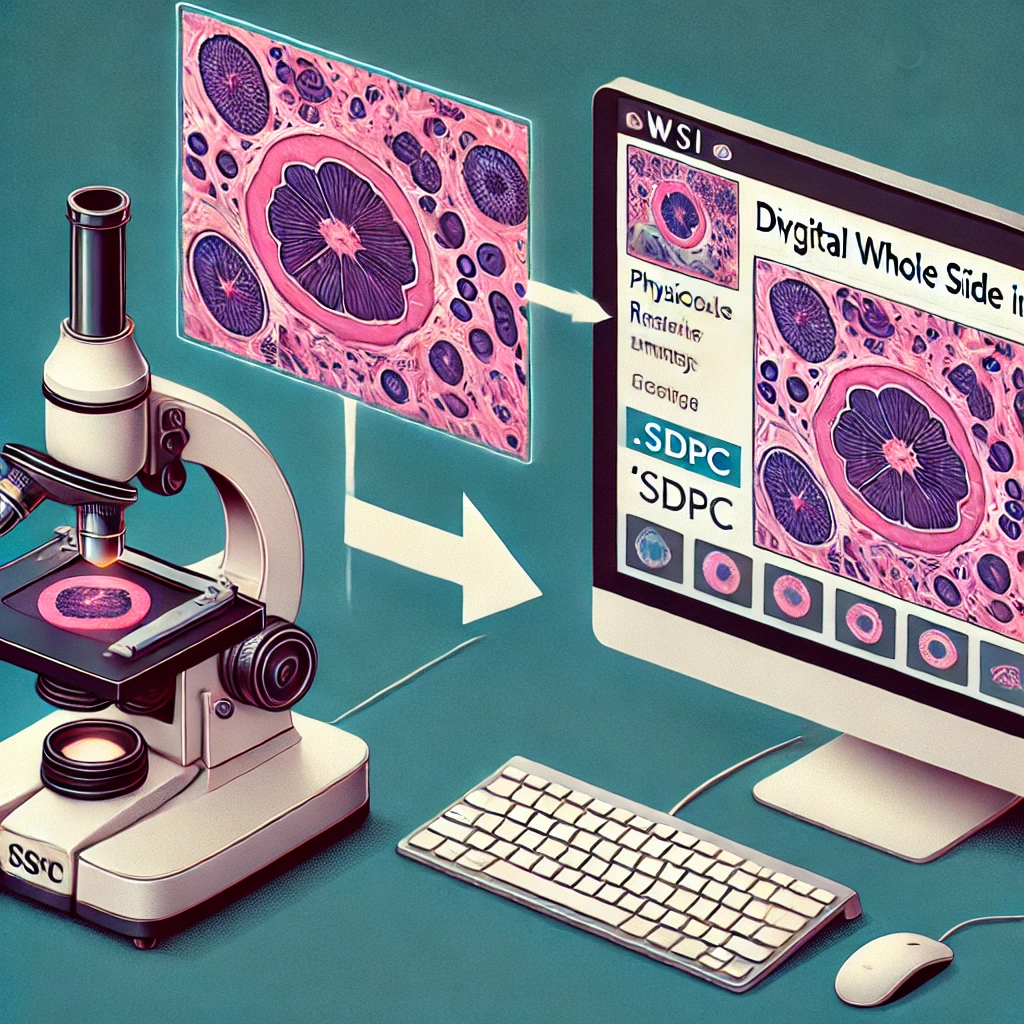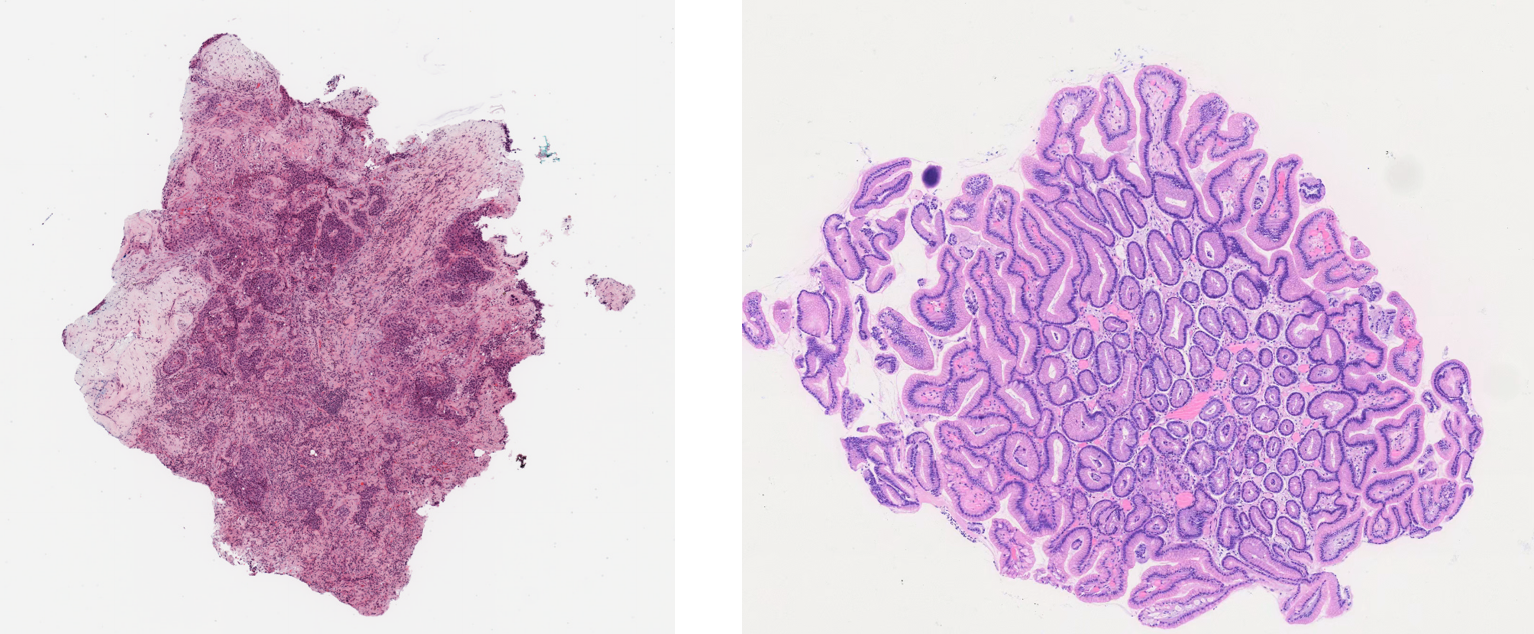Click to expand/collapse previous news.
We have reorganized the previous pipeline and opened a new python library called opensdpc. Here are some of its features:
- Corrected the usage of some functions in the previous sdpc-for-python and sdpc-linux libraries. Now they are completely aligned with the openslide library. Specifically, the following two contents have been changed:
slide.level_dimension->slide.level_dimensionsimg = Image.fromarray(slide.read_region((cut_x, cut_y), patch_level, (tile_size, tile_size)))->img = slide.read_region((x_start, y_start), args.WSI_level, (x_offset, y_offset)).convert('RGB')
- The previous method required changing the environment variables, now it is no longer neccessary to modify them manually
- The previous sdpc and openslide library have been integrated, now a unified interface is used to call them. Therefore, the opensdpc supports .sdpc and all WSI formats supported by other openslide libraries.
- Some users' machines are not compatible with the latest compiled packages. For this reason, you can still use old versions. See: old version for sdpc library.
- Due to copyright restrictions, I cannot directly provide the software for converting sdpc to svs. I am actively communicating with the company and providing an open source interface. Please contact the slide-scanner after-sales staff to request it. See sqray.com for more details.
- Provide an example for generating patches with multiple thread in order to provide pre-processing for huge datasets. See this subsection.
[Note] please use version==1.5 if you want to use sdpc-linux. I may be slow to reply, thank you for the patience 😊.
If you don't know how to deal with the old version, here is a simple plug-and-play process:
- Step1: Click the Tsinghua cloud link to download LINUX.zip directly;
- Step2: Replace the unzipped LINUX folder with the LINUX folder of the sdpc package in your own environment;
- Step3: Write the absolute path of the LINUX folder and the ffmpeg folder inside it into the environment variable, see the issue #2 for more details
- Step4: Just enter
import sdpcin python to use it.
- Updated Part "Troubleshooting"
- sdpc-linux and sdpc-win are no longer be updated. The latest library sdpc-for-python is a new version for Sdpc Python library, which can be used in both Windows and Linux Systems.
- The color correction has been updated. Now the color of the cropped patches are consistent with the color in the reading software.
- Changed function name
level_downsampletolevel_downsamples. - Chineses paths have been supported.
- Added a function to view the magnification directly:
wsi.scan_magnification(). - Added a function to view the sampling ratio directly:
wsi.sampling_rate(). - Added a function of obtaining the thumbnail image:
wsi.get_thumbnail(thumbnail_level). - The
wsi.crop_patches()function has been added. Now you can call the function directly in the code to separate the foreground tissue area and crop the patches (Using Pillow Library to save patches). - Added a option that can normalize images in
wsi.crop_patches()function, it normalizes by H and E channels.
opensdpc is a python library for processing whole slide images (WSIs) in sdpc format extended form openslide library, therefore, opensdpc also supports other common formats such as svs, tiff, ndpi, etc. To read WSIs in sdpc format in Windows platform, download the TEKSQRAY reading software.
| Download link | Extraction code | Instruction |
|---|---|---|
| Baidu Cloud | sq12 | Lite version |
| Please see the sqray.com | - | Full version |
There are several versions available. We recommend Linux users to use the opensdpc version.
-
[Optional] install openslide library on Linux (same as openslide)
apt install openslide-tools pip install openslide-pythonIf your system has already install the openslide-tools and openslide-python, you can skip this step.
-
[Optional] install opensdpc-tools
wget --content-disposition https://cloud.tsinghua.edu.cn/f/9077d5abb17a4f10b7d6/?dl=1 dpkg -i opensdpc-tools_1.0-1_all.debYou can also download this tool from Tsinghua Cloud. If you want to remove it,
sudo dpkg -P opensdpc-tools.
[Note]: the installation of opensdpc-tools requires root permission, so you need to usesudo -ito install it. If your system has already install the opensdpc-tools, you can skip this step. -
install opensdpc library
pip install opensdpcAfter this operation, the opensdpc installation is complete.
Some users have no sudo permission on their Linux system. In this case, you can git clone this repository first by git clone https://github.com/WonderLandxD/opensdpc.git, then refer to the following steps to add the opensdpc environment variable:
vim ~/.bashrc
export LD_LIBRARY_PATH=$LD_LIBRARY_PATH:/<repository_path>/LINUX/:/<repository_path>/LINUX/ffmpeg/
source ~/.bashrc
After this operation, you can also import opensdpc library in your python code.
Other libraries
-
install sdpc-win library
pip install sdpc-winAfter this operation, the sdpc-win installation is complete.
-
install sdpc-for-python library
pip install sdpc-for-pythonAfter this operation, the sdpc-for-python installation is complete.
-
install sdpc-linux library
pip install sdpc-linux==1.5After this operation, the sdpc-linux installation is complete.
There are two example WSIs in the data folder, which are in the sdpc format and svs format (download from CLAM) respectively.
We will use the sdpc format WSI as an example to demonstrate how to use basic functions of opensdpc.
import opensdpc
slide = opensdpc.OpenSdpc('data/20220514_145829_0.sdpc') # load the WSI
print(f'This WSI have {slide.level_count} levels.') # the number of levels
print(f'The magnification of this WSI is {slide.scan_magnification}x.') # the magnification of the WSI
print(f'The downsampling ratio of this WSI is {slide.sampling_rate}.') # the downsampling ratio of the WSI
print(f'The downsample ratio of each level is {slide.level_downsamples}.') # the downsample ratio of each level
print(f'The dimensions of each level is {slide.level_dimensions}.') # the dimensions of each level
thumbnail = slide.get_thumbnail(3) # get the thumbnail of the WSI
print(f'The thumbnail (level 3) shape is {thumbnail.shape}.') # the shape of the thumbnail
you will see the result like this:
This WSI have 4 levels.
The magnification of this WSI is 40x.
The downsampling ratio of this WSI is 0.25.
The downsample ratio of each level is (1.0, 4.0, 16.0, 64.0).
The dimensions of each level is ((26880, 21504), (6720, 5376), (1680, 1344), (420, 336)).
The thumbnail (level 3) shape is (336, 420, 3).
We provide a demo file to show how to generate the patches from the WSI. See generate_demo.ipynb for more details. Note: when using .ipynb file at the first time, you need install the opensdpc library using pip in Jupyter Notebook, jump to here to see how to do it.
Jiawen Li, H&G Pathology AI Research Team

